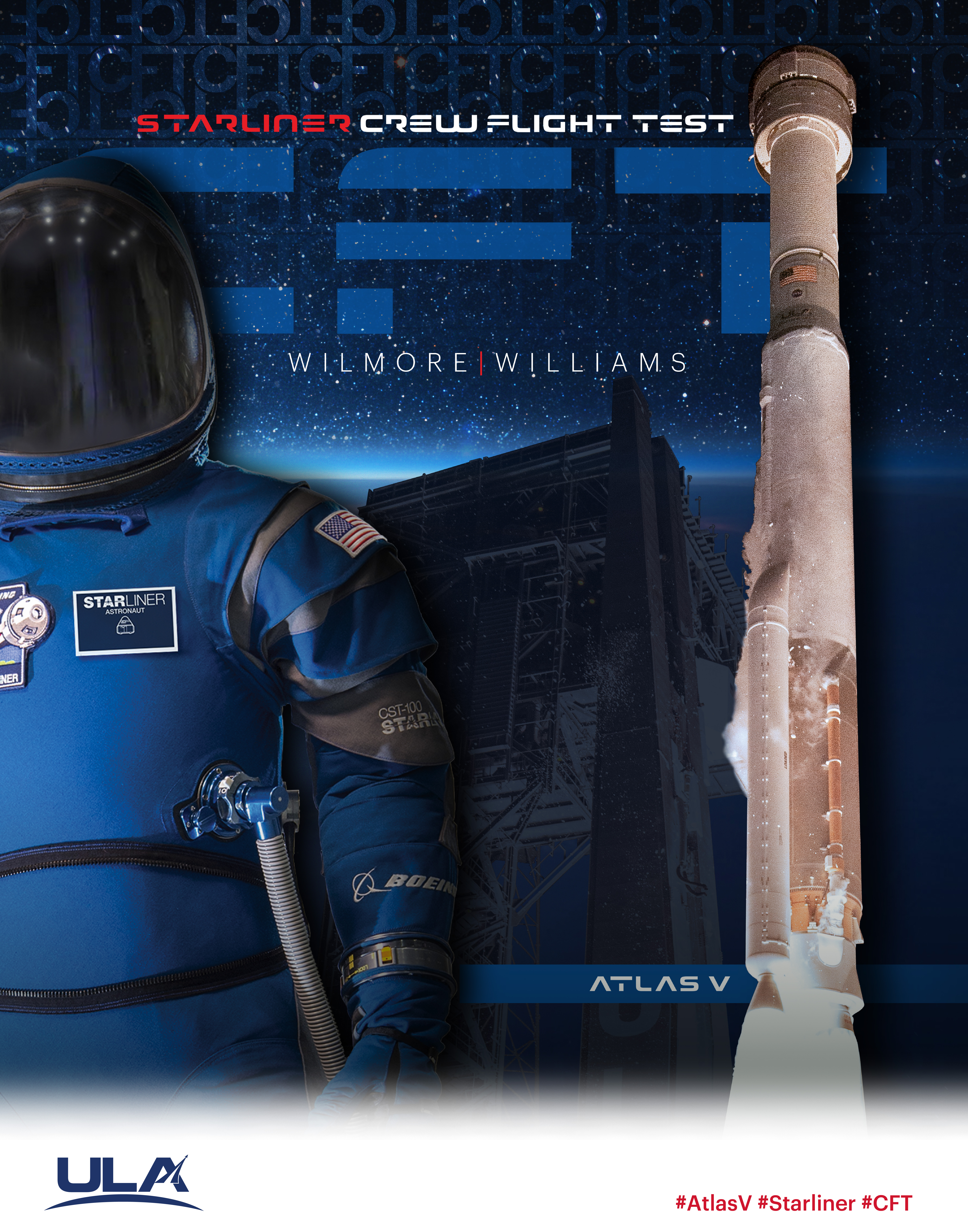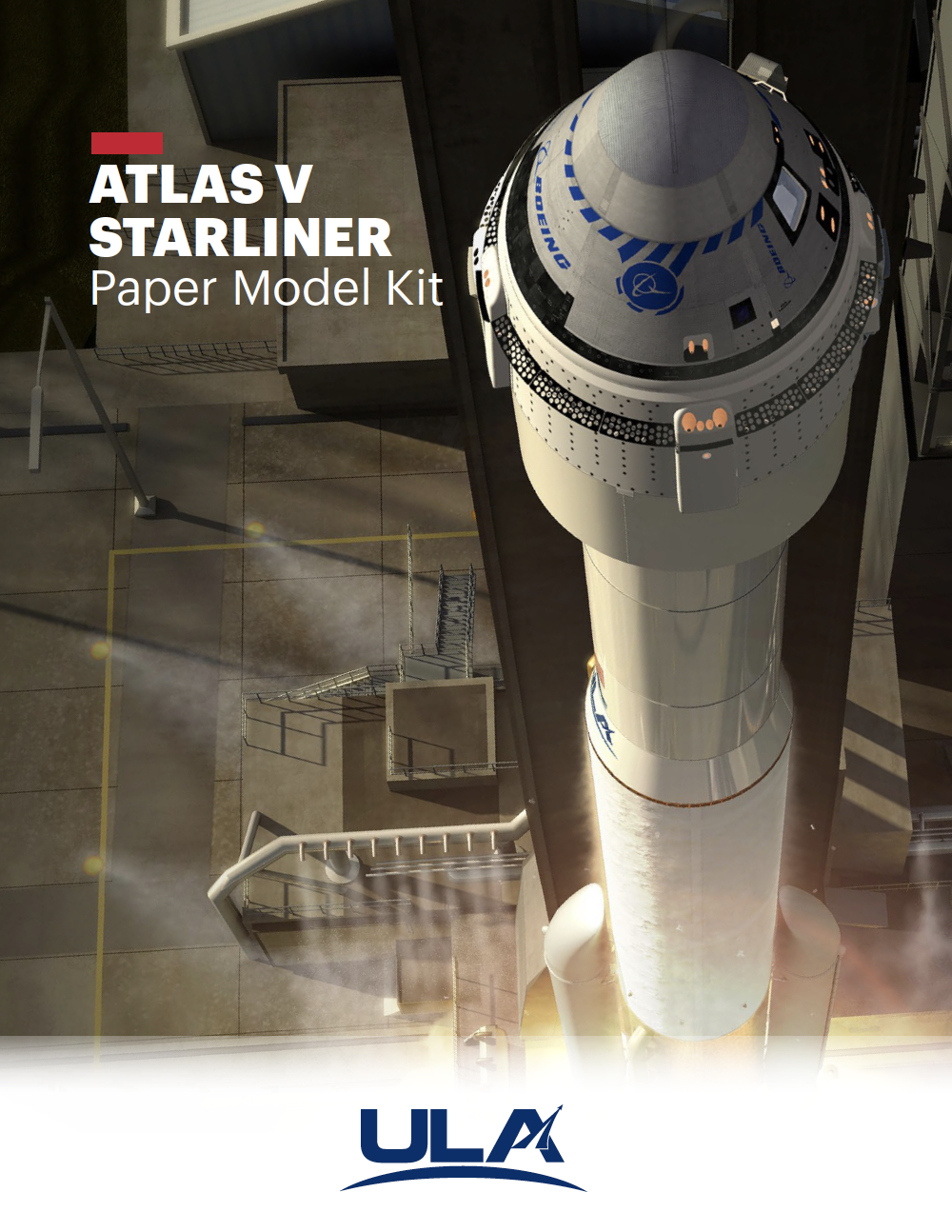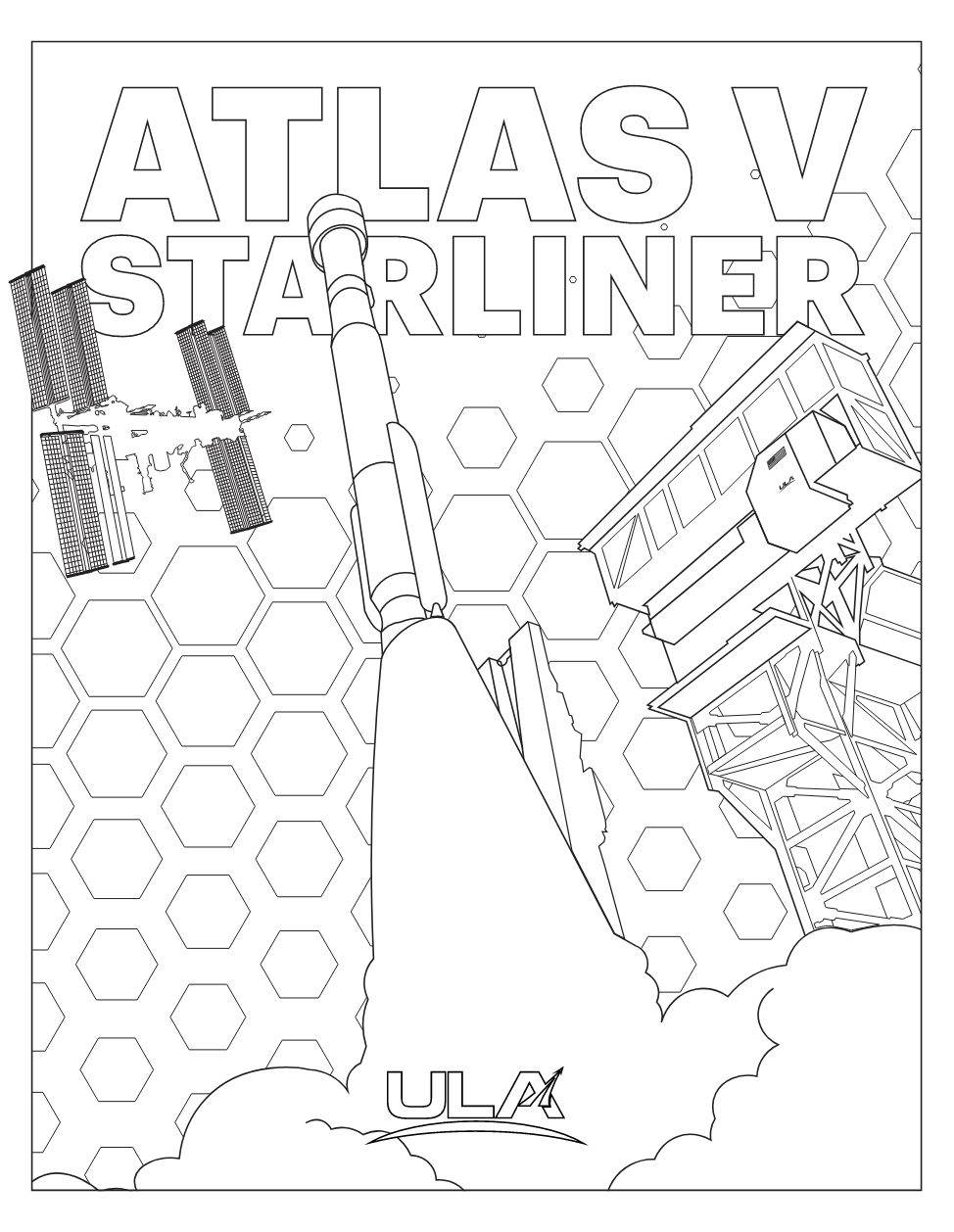Atlas V launches starliner Crew flight test (CFT)
For the first time in history, a United Launch Alliance (ULA) Atlas V carrying NASA astronauts aboard Boeing’s CST-100 Starliner lifted off on June 5 at 10:52 a.m. EDT from Space Launch Complex-41 (SLC-41) at Cape Canaveral Space Force Station, Florida. The launch of NASA astronauts Barry “Butch” Wilmore and Sunita “Suni” Williams marks the return of human spaceflight to Cape Canaveral and extends the Atlas legacy, echoing the launch of U.S. astronaut John Glenn aboard a heritage Atlas LV-3B rocket from Cape Canaveral, Florida, in 1962.
Go Atlas! Go Centaur! Go Starliner!
Launch Webcast
Live updates
To keep up to speed with updates to the launch countdown, dial the ULA launch hotline at 1-877-852-4321.
Join the conversation on social media @ulalaunch.
#AtlasV #Starliner #CFT
Mission Overview
A United Launch Alliance (ULA) Atlas V rocket will launch Boeing’s Crew Space Transportation (CST)-100 Starliner spacecraft with two NASA astronauts on the Crew Flight Test (CFT). Following separation from Atlas V, Starliner engines will burn taking it the rest of the way to orbit and on to the International Space Station. CFT is ULA's first human launch. Liftoff will occur from Space Launch Complex-41 at Cape Canaveral Space Force Station, Florida.
CFT is the final test to demonstrate the full end-to-end capabilities of the Starliner system to deliver crews to and from the space station as part of NASA's Commercial Crew Program. The unique Atlas configuration for Starliner includes a dual-engine Centaur upper stage to deliver the performance needed to shape the trajectory for crew safety; a launch vehicle adapter that structurally attaches the Starliner to the Atlas V rocket for ascent; a 70-inch-long (1.8-m) aeroskirt to enhance the aerodynamic characteristics, stability and loads of the Atlas V; and an Emergency Detection System that provides an extra layer of safety for astronauts riding the reliable Atlas V. The Atlas V Starliner launch countdown features a four-hour planned, built-in hold at the T-minus 4-minute mark. This allows the rocket to be fueled and placed in a quiescent state before boarding of the astronauts into the spacecraft.
CFT bridges the history of Atlas with today's rocket. The first orbital spaceflights of American astronauts in the 1960s were launched in Project Mercury by Atlas rockets from Cape Canaveral. That legacy continues with Atlas V launching crews from U.S. soil.
Launch Vehicle
Spacecraft
Modified specifically for the Boeing CST-100 Starliner spacecraft, the Atlas V Starliner configuration does not include a payload fairing. Instead, the Starliner’s insulated surfaces take the place of the fairing to protect the crewed spacecraft during ascent. The vehicle’s height with the Boeing CST-100 Starliner is approximately 172 ft (52.4 meters).
The CST-100 Starliner is attached to the Atlas V using a launch vehicle adapter (LVA), which also includes an aeroskirt to reduce the aerodynamic loads on the vehicle. The aeroskirt is jettisoned for improved performance following booster stage separation.
Centaur
The Centaur second stage is 10 ft (3 meters) in diameter and 41.5 ft (12.6 meters) in length. Its propellant tanks are pressure-stabilized and constructed of corrosion-resistant stainless steel. Centaur is a cryogenic vehicle, fueled with liquid hydrogen and liquid oxygen. The Atlas V configuration for this mission is powered by dual RL10A-4-2 engines, each producing 22,600 lbs (100.5 kilo-Newtons) of thrust. The cryogenic tanks are insulated with a combination of helium-purged blankets, radiation shields and spray-on foam insulation (SOFI). The Centaur forward adapter (CFA) provides structural mountings for the fault-tolerant avionics system and electrical interfaces with the spacecraft. The Centaur also includes an Emergency Detection System (EDS) that monitors for critical hazards to detect an imminent or occurring failure. The EDS also provides critical in-flight data which supports jettison of the ascent cover and initiates CST-100 Starliner spacecraft separation.
Booster
The booster is 12.5 ft (3.81 meters) in diameter and 106.5 ft (32.4 meters) in length. The booster’s tanks are structurally rigid and constructed of isogrid aluminum barrels, spun-formed aluminum domes and intertank skirts. Booster propulsion is provided by the RD-180 engine system (a single engine with two thrust chambers). The RD-180 burns RP-1 (Rocket Propellant-1 or highly purified kerosene) and liquid oxygen and delivers 860,200 lbs (3.83 mega-Newtons) of thrust at sea level. Two solid rocket boosters (SRBs) generate the additional power required at liftoff, with each SRB providing 348,500 lbs (1.55 mega-Newtons) of thrust. The Centaur avionics system provides guidance, flight control and vehicle sequencing functions during the booster and Centaur phases of flight.
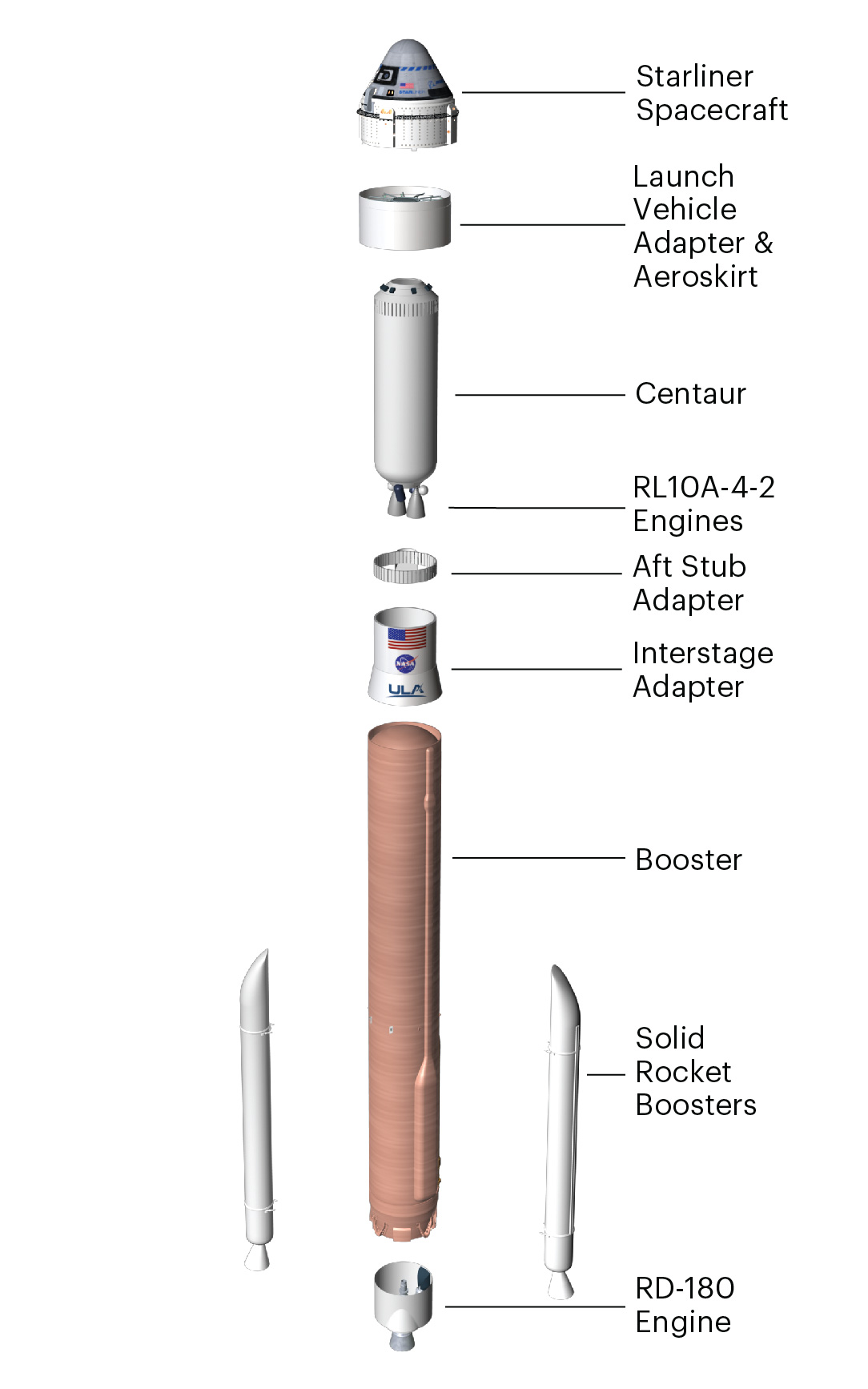
Flight Profile
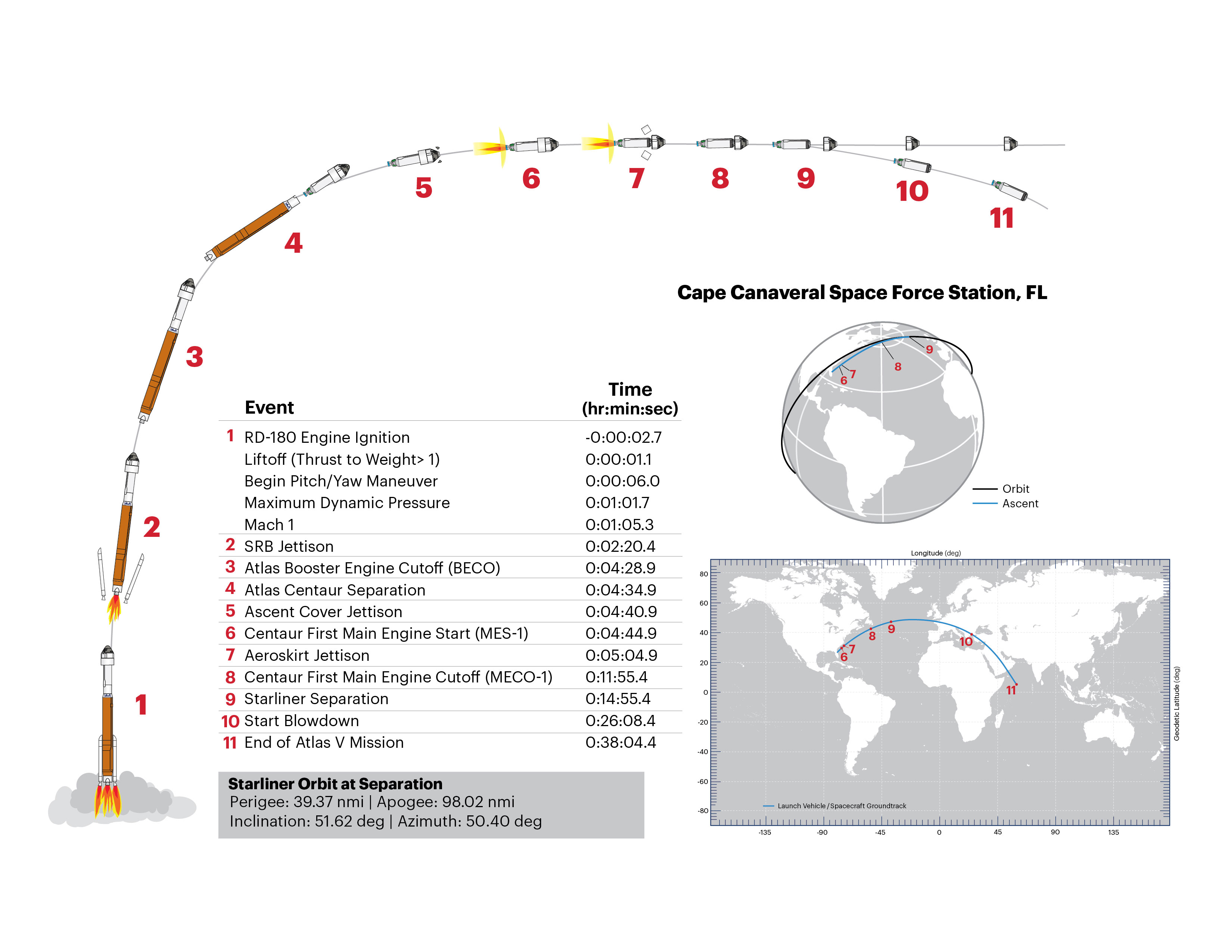
Space Launch Complex-41 // Processing
Space Launch Complex-41 (SLC-41), the East Coast home of the Atlas V rocket at Cape Canaveral Space Force Station in Florida, employs a “clean pad” concept of operations to ready launch vehicles and payloads for ascent into space. The rocket elements are assembled atop a Mobile Launch Platform inside the Vertical Integration Facility (VIF) located adjacent to the launch pad. The platform and fully stacked Atlas V then travel by rail approximately 1,800 feet northward from the VIF to the pad for the final countdown, fueling and liftoff. Complex 41 was constructed by the U.S. Air Force in the 1960s for the Titan rocket program. The site was rejuvenated in support of the Atlas V starting in the late 1990s.
![CFT_PadProcessing_ExternalWebsite-01[81] CFT_PadProcessing_ExternalWebsite-01[81]](/images/default-source/default-album/cft_padprocessing_externalwebsite-01-81.jpg?sfvrsn=ae19c65d_0)
1. Advanced Spaceflight Operations Center (ASOC)
Launch Control Center
Mission Director’s Center,
Mission Support Teams,
Launch Vehicle Horizontal Processing &
Ordnance Installation
2. Delta Operations Center (DOC)
ISA, Centaur, Boattail & Aeroskirt Vertical Integration
3. Vertical Integration Facility
Launch Vehicle Integration &
Testing, Spacecraft Mate &
Integrated Operations
Production
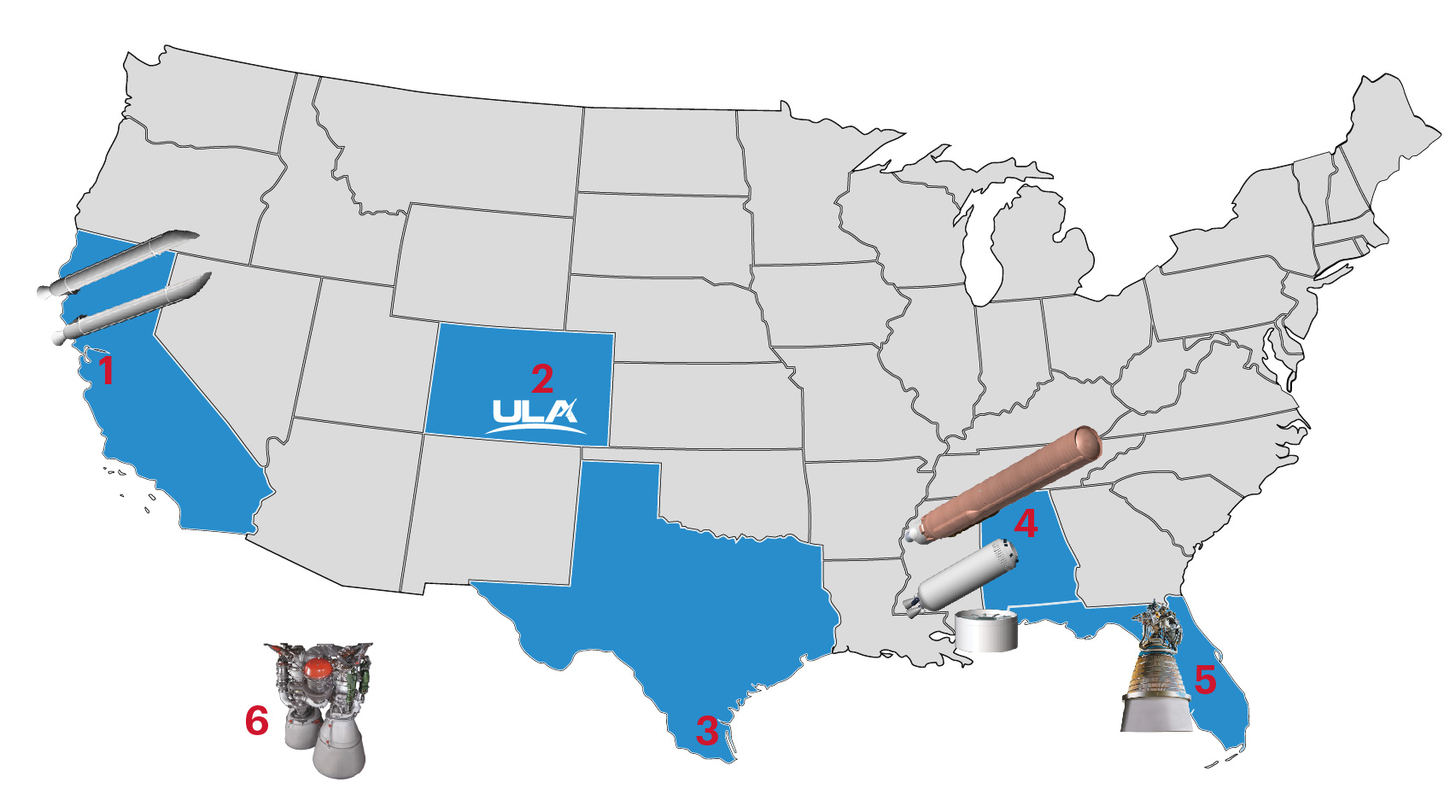
1. Sacramento, CA
Solid Rocket Booster Fabrication
at Aerojet Rocketdyne
2. Denver, CO
ULA Headquarters &
Design Center Engineering
3. Harlingen, TX
Booster Adapter &
Centaur Adapter Fabrication
4. Decatur, AL
Booster Fabrication & Final Assembly,
Centaur Tank Fabrication & Final Assembly
5. West Palm Beach, FL
RL10A-4-2 Engine Fabrication at
Aerojet Rocketdyne
6. Khimki, Russia
RD-180 Engine Fabrication at
NPO Energomash


